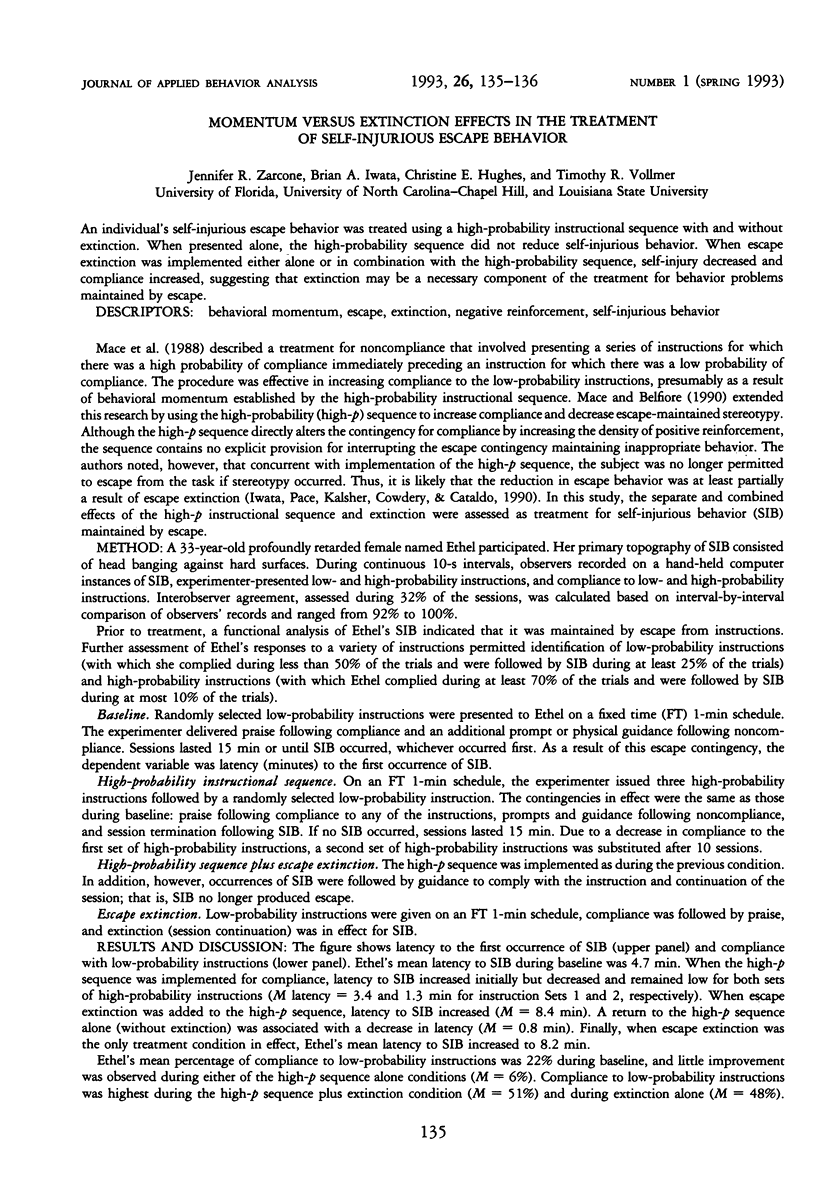Abstract
An individual's self-injurious escape behavior was treated using a high-probability instructional sequence with and without extinction. When presented alone, the high-probability sequence did not reduce self-injurious behavior. When escape extinction was implemented either alone or in combination with the high-probability sequence, self-injury decreased and compliance increased, suggesting that extinction may be a necessary component of the treatment for behavior problems maintained by escape.
Full text
PDF

Selected References
These references are in PubMed. This may not be the complete list of references from this article.
- Iwata B. A., Pace G. M., Kalsher M. J., Cowdery G. E., Cataldo M. F. Experimental analysis and extinction of self-injurious escape behavior. J Appl Behav Anal. 1990 Spring;23(1):11–27. doi: 10.1901/jaba.1990.23-11. [DOI] [PMC free article] [PubMed] [Google Scholar]
- Mace F. C., Belfiore P. Behavioral momentum in the treatment of escape-motivated stereotypy. J Appl Behav Anal. 1990 Winter;23(4):507–514. doi: 10.1901/jaba.1990.23-507. [DOI] [PMC free article] [PubMed] [Google Scholar]
- Mace F. C., Hock M. L., Lalli J. S., West B. J., Belfiore P., Pinter E., Brown D. K. Behavioral momentum in the treatment of noncompliance. J Appl Behav Anal. 1988 Summer;21(2):123–141. doi: 10.1901/jaba.1988.21-123. [DOI] [PMC free article] [PubMed] [Google Scholar]


